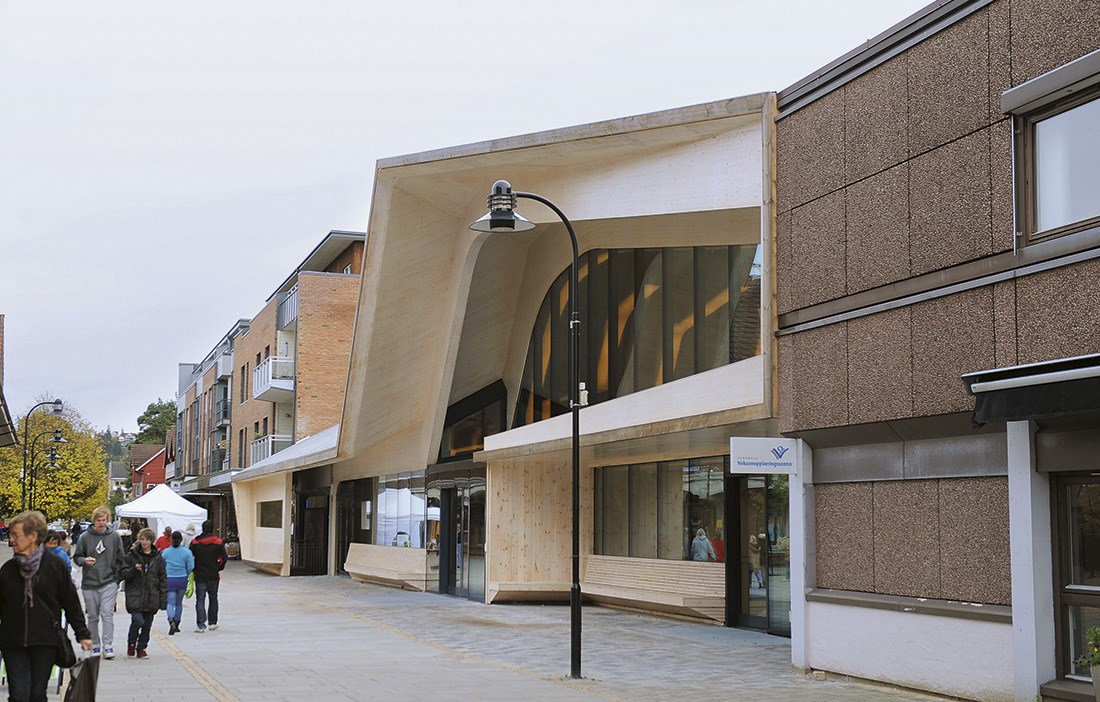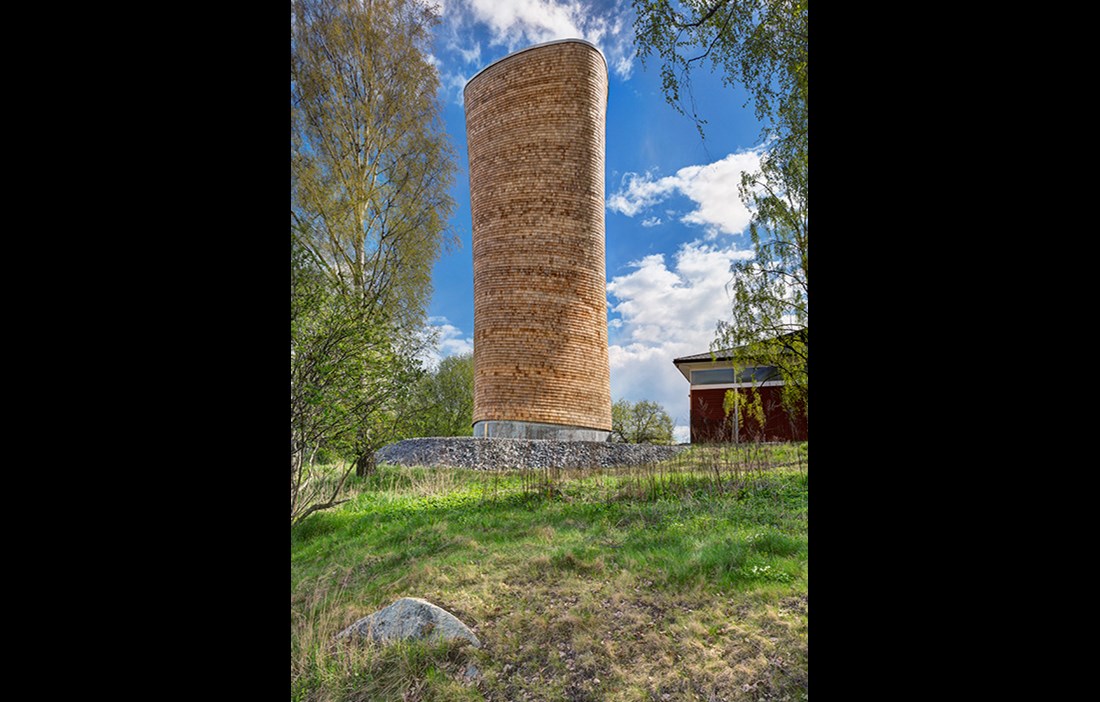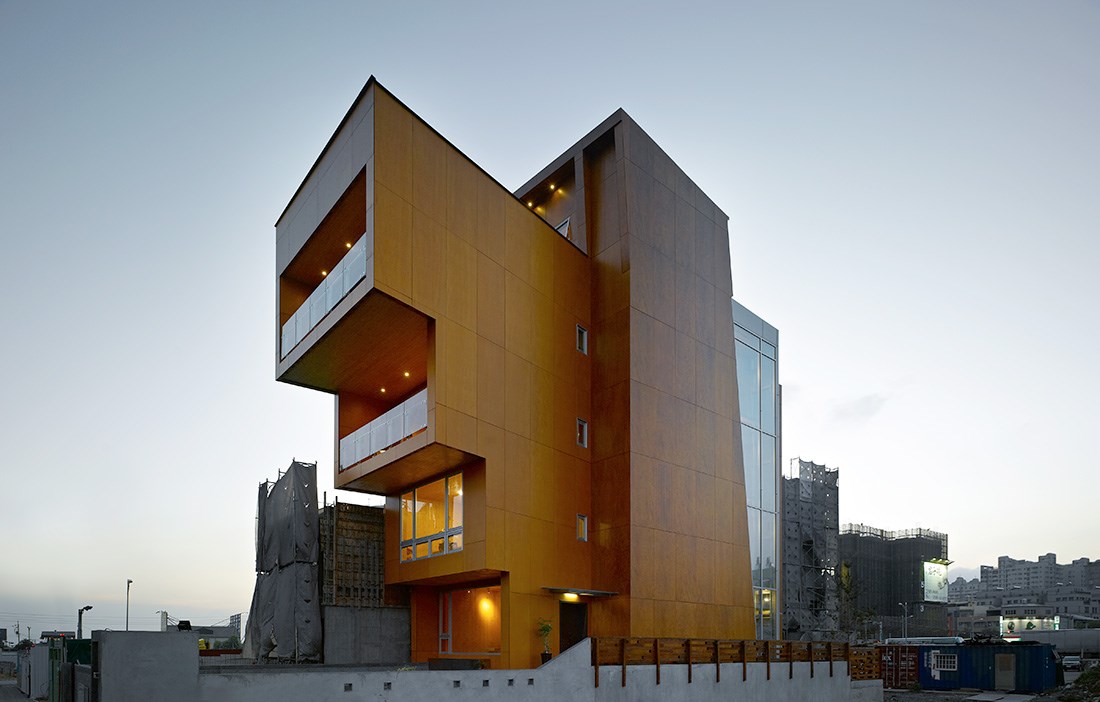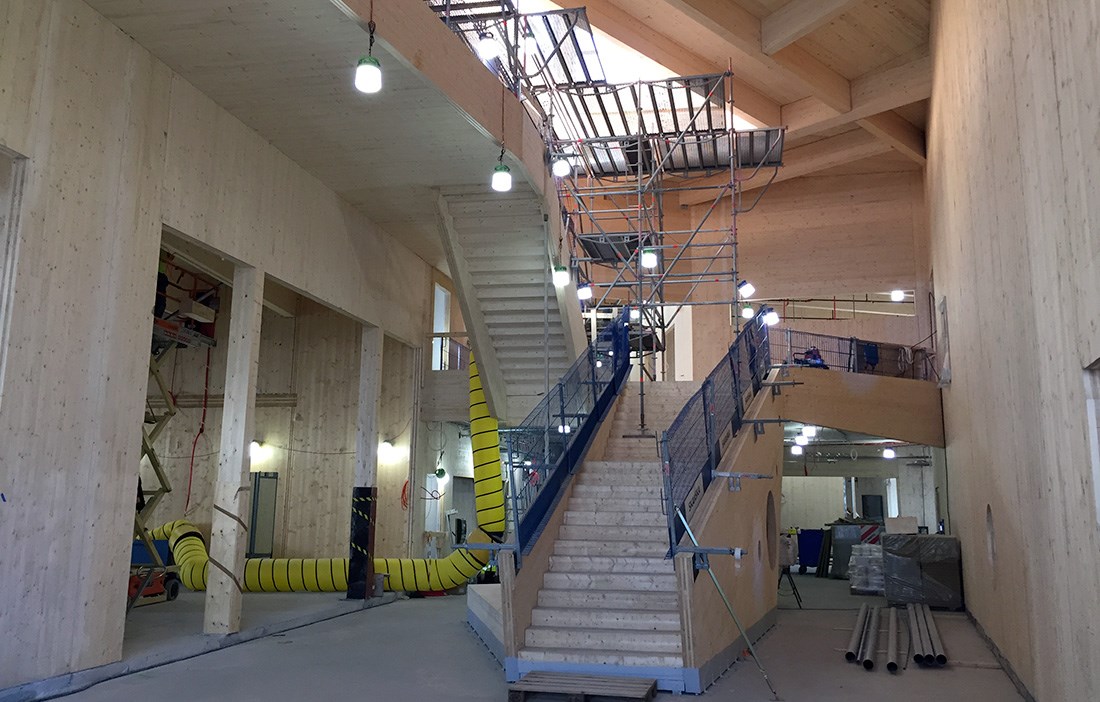Strong, light sheet – Wood construction advanced in leaps and bounds during the 20th century. Structural components with a bonded composite cross-section led to more and more efficiently produced and advanced wood-based projects seeing the light of day. Digital management of the whole chain, from design to production, has proven the perfect match for the field of wood construction. Wood is so easy to work that it offers unlimited scope to design and optimise structural and construction components, with a high degree of prefabrication at a low energy cost. A prime example is the ventilation tower in Lill-Jansskogen in Stockholm (fig 1), which was made by cutting frames from CLT panels and then stacking them on top of each other, using steel rods to tie them together.
Cross laminated timber, generally abbreviated to CLT or crosslam, is a sheet material made from planed boards, usually spruce, that are bonded together in alternately perpendicular layers. The panels are currently manufactured by several companies in Europe, including Martinsons in Sweden, which has capacity for up to 16 metre lengths, widths of 3 metres and thicknesses of 300 millimetres. This year, Stora Enso and Södra will also begin production of Swedish CLT, starting in 2019.
For a while now, wood construction has been making a name for itself in high-rise apartment blocks. CLT is excellent for high-rises due to its high stiffness and robust system – CLT is at its most competitive in apartment blocks of six to twelve floors. In its raw format, CLT also offers a range of options for efficient production of advanced, contemporary architecture and even the development of new typologies.
A Norwegian example can be found in Vennesla whose library, which was completed in 2011, sits beneath a roof structure that uses frames of glulam and plywood, with exterior walls and floor structures in CLT that have been left exposed in the interior (fig 2).
Free form – Cross laminated panels can be prefabricated to any level of finish. One major benefit is their ability to function as a high beam or cantilevered support – they form stiff, robust structural elements that can be held up by relatively broadly spaced supports, such as pillars or walls. In the four storey Woodtek HQ (2014) building in Taichung City, Taiwan, which has a modest overall height, CLT panels are used to give the main body a stepped and cantilevered design (fig 3). CLT panels are generally flat, although single curves do exist, and a wide variety of designs can be created using folded shapes. Folded shell structures – which look like they are inspired by origami – have structural benefits and the principles of paper folding can be transferred to CLT components that are joined together with wood screws and/or bent steel plates at the folds. An early example of this was the temporary chapel in Saint-Loup, Switzerland, which was built in 2008 (fig 4). Here the CLT panels have been left clean and exposed inside, while the exterior has extra cladding to weatherproof the carcass.
Austria’s SPA 3000 Aquadome (2012) in Längenfeld uses CLT panels to form a folded shell with a faceted interior that leaves the wooden surfaces exposed (fig 5).
Extreme efficiency – Holes can easily be cut out of CLT panels for windows, doorways, cables, pipes and so on, either in the factory or on site. Herrestaskolan is a school that was built in Järfälla north of Stockholm in 2015 with a CLT frame. The hole cutting and the design of the stairs fully exploited CLT’s benefits regarding prefabrication and workability (fig 6). This facility to effectively work on the panels, both in the factory and on site, makes it easy to optimise handling and working during the construction process. While the panels are stiff and robust, they are also lightweight, which is good news for prefabrication, logistics, transport and assembly on the construction site, and only light cranes are needed for lifting.
Natural surface – The early architectural visions for CLT were often about the “honesty” of leaving structural elements exposed both externally and internally. However, this turned out not to be so simple, as CLT panels are not terribly well suited to external exposure. Internally there is every opportunity to reveal the structural material, although fire safety standards can require encasing. When it is left exposed, studies indicate benefits for the indoor climate. Wood in interiors tends to have a calming effect on the users, whether in hospital environments or schools, where stress levels appear to be lowered by the presence of wood. In terms of temperature and moisture, there is a certain exchange between the indoor air and the surface of the exposed wooden material. The wooden surfaces don’t need to be left untreated to draw on these properties – breathable paints still allow this exchange between the air and the wood. Jobs such as cutting out channels for cables and pipes, covering joints and adding perforations naturally still have to be done, but the panels provide a usable finish immediately on delivery.
By making the most of the freedom to cut holes and vary the panels’ function as a panel, sheet, beam or fold, the exterior design can still embrace the distinct language of CLT, as in the Aquadome in Längenfeld and the library in Vennesla above. This versatile use gets to the very essence of CLT, which is helping to drive the refined development of architecture and give wood construction a new signature look.
Text Andreas Falk


























